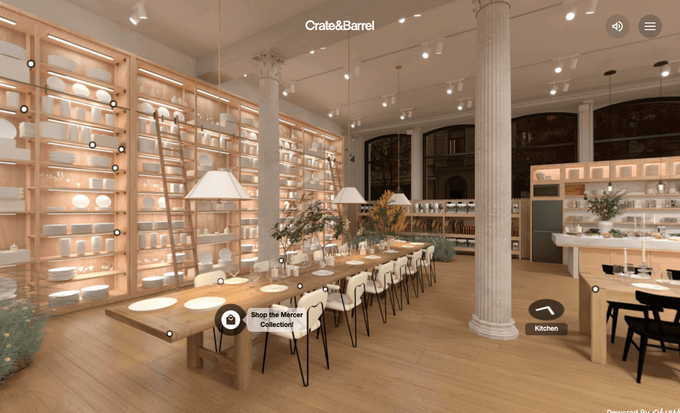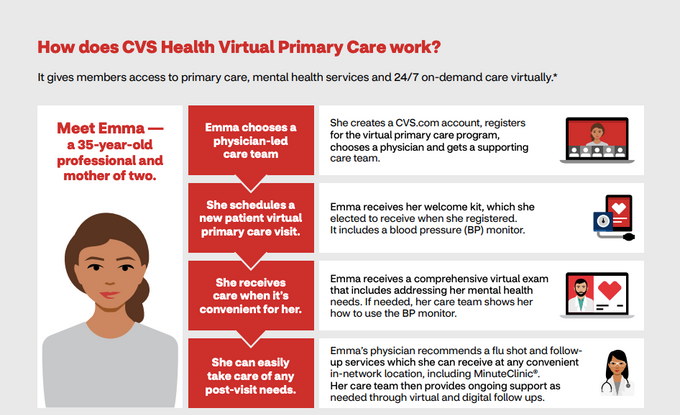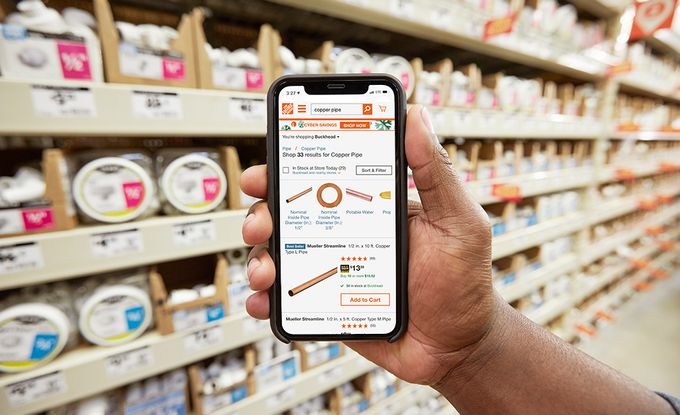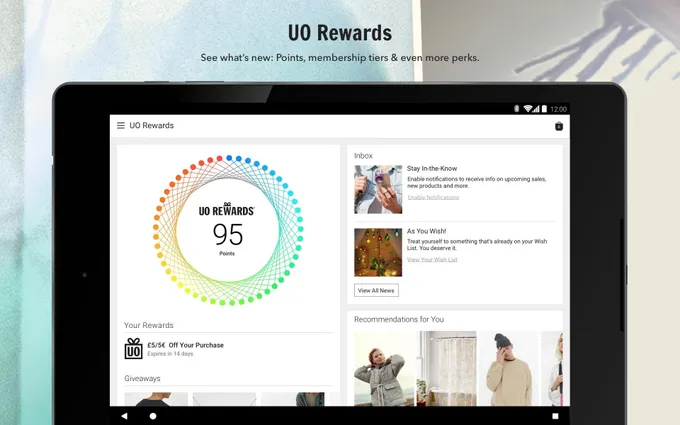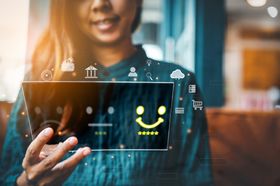7 Inspiring Omnichannel Merchandising Examples to Consider
Omnichannel merchandising is all about meeting customers where they are, online or in-store. Here are the best brands you can learn from.
Updated December 2, 2024

With omnichannel merchandising, the customer is squarely at the center of your brand experience, regardless of where they shop. So whether they're finding your products on Instagram, in a brick-and-mortar space, or in your eCommerce store, they'll get better personalization, convenience, and connection.
But how do you pull off omnichannel merchandising successfully? Below, we'll take a close look at seven top retailers that are getting it right. Plus we'll make sure you leave with valuable takeaways for your own store.
» Want to grow your eCommerce business? See these 6 searchandising strategies.
Meet the Expert
Arjel Vajvoda, Head of Product at Motomtech, leverages her extensive experience in customer support to craft user-focused SaaS products with innovative documentation solutions.
What is Omnichannel Merchandising?
Omnichannel merchandising is when you create a seamless and consistent shopping experience across all your sales channels. This includes online stores, physical stores, mobile apps, social media, and even third-party marketplaces.
It's essentially breaking down the silos between different channels and viewing them as one interconnected system.
Gen Z shoppers are twice as likely as older generations to use omnichannel strategies. So it's essential to start curating a holistic experience if you're looking to capture this audience.
Omnichannel retail drives higher spending and happier customers. It enables personalized experiences and flexible purchasing options, which increase convenience and loyalty.
» Find out why e-commerce integrations are important.
7 Omnichannel Merchandising Examples to Consider
1. Unpacking Excellence: Crate & Barrel's Omnichannel Journey
Crate & Barrel isn’t just any home furnishings retailer. They’re all about giving you a memorable, personalized shopping experience, no matter where you are. They’re big on digital, using AI to make your interactions with them feel just right.
They’ve also jazzed up their physical spaces with digital features, like augmented reality (AR) for shopping. They've also launched a flagship store in New York's Flatiron district with a virtual shopping counterpart.
Here’s what they’re doing:
- Keeping their branding, service, and pricing consistent across all channels.
- Using AI and tools like Google Cloud’s BigQuery to understand customers better and personalize your experience.
- Adding digital features, like AR and VR for shopping.
- Using data to make their supply chain and inventory management smarter.
- Making it easy for you to pick up and return online orders at their stores.
By leading the way in luxury omnichannel commerce, Crate & Barrel is meeting the demand for integrated, high-end shopping and making customers stick around.
What You Can Learn From Crate & Barrell:
You don't need to open a virtual reality store to offer memorable store shopping. Simply make sure your digital and physical experiences are in sync to meet your shoppers' expectations. Here’s how you can do it:
- Align Your Branding: Make sure your branding is consistent across all channels. Your customers should feel the same vibe whether they’re shopping online or in-store.
- Price It Right: Your pricing should also be consistent. Don’t let your customers feel like they’re getting a better deal in one place over another.
- Ace Your Customer Service: Whether it’s online or in-store, your customer service should be top-notch. Remember, a happy customer is a loyal customer.
- Leverage AI: Personalize your customer interactions at every touchpoint with AI.
2. CVS: Your Pharmacy for Virtual, Human-Centered Healthcare
CVS is connecting its physical and digital resources to make healthcare more convenient and accessible. Think pharmacies and retail clinics combined with digital tools like telehealth. This means you can get care when you need it, regular health services, and advice, all in one place.
It also uses analytics across all channels to give you recommendations that really hit the mark.
Key elements:
- Offering more clinical services in-store and online, including primary care and HealthHUBs.
- Making healthcare seamless across retail, pharmacy, and digital channels.
- Using telehealth for virtual doctor visits.
- Having a robust mobile app that ties in with in-store and pharmacy experiences.
- Using analytics-driven platforms and tools to give you personalized guidance.
With this approach, CVS is positioning itself as a health partner, giving you access to healthcare wherever you are, whenever you need it.
Looking to Learn From CVS?
It's all about making things easier for your customers and giving them a reason to keep coming back.
Connect Online and Offline: Just like CVS, you can bridge your online and offline channels. Think about how you can use tools like mobile apps to make things more convenient and accessible for your customers.
Use Analytics: CVS uses analytics across all channels to give personalized recommendations. You can do the same. Use data to understand your customers better and give them what they want.
Become a Trusted Partner: It’s not just about selling products or services. It’s about becoming a trusted partner for your customers. Use your online and offline channels, along with personalized recommendations, to build that trust.
3. Walgreens’ Prescription for Data-Driven Healthcare
Walgreens connects its huge network of stores with digital platforms to give you personalized, omnichannel healthcare.
It's using data-driven initiatives to tackle health disparities. In 2021, it rolled out same-day delivery as part of its omnichannel efforts.
Here’s what it's up to:
- Giving pharmacists a bigger role to support expanded care delivery across all channels.
- Investing in initiatives like the Chicago Health Equity Incubator and predictive models to address health disparities.
- Nifty mobile app features, like prescription refill by scan.
- Building data lakes for more accurate analysis and campaigns.
- Using technology to lay the groundwork for future digital experiences.
By bringing together physical and digital healthcare assets, Walgreens is making health journeys more personalized. It's at the forefront of using data and technology to help customers live healthier lives.
What to Take Away From Walgreens:
Leveraging data can help you meet diverse customer needs and optimize their journey across all channels.
- Understand Your Customers: Use data analytics and predictive models to gain insights into your customers’ needs and preferences.
- Enhance Mobile Features: Don’t forget about your mobile features. Make them as user-friendly and useful as possible.
- Integrated Commerce: Blend online and offline channels for a seamless shopping experience across all platforms.
» Want to go mobile? Here's how to make your eCommerce store mobile-friendly.
4. Home Depot: Building a Personalized Experience
Home Depot uses customer insights from all over to make your shopping experience and its marketing strategies even better. This means smoother DIY and home improvement journeys for you.
It uses data and advanced tools like Adobe’s Real-Time Customer Data Platform to give you personalized product recommendations and make buying stuff a breeze. And it even takes into account your project goals and what you’ve bought in the past.
Here's what it's doing:
- Pulling together customer data to get a full picture of your buying journey.
- Making your shopping experience great, whether you’re online or in-store.
- Refining their marketing strategies to make your journey seamless.
- Giving you personalized product suggestions based on what they know about you.
- Using tech like AI to power their recommendation engines.
By personalizing your home improvement experience, Home Depot is building loyalty among DIYers and pros alike. Its data-driven approach makes shopping more convenient.
What You Can Learn From Home Depot: Having a unified view of your customer data can help you deliver tailored, convenient experiences across all commerce channels.
Know Your Customers: Develop customer profiles to understand their needs and preferences better. The more you know about your customers, the better you can serve them.
Use AI Power: Implement AI-powered personalized search and recommendation engines. This can help you provide tailored product suggestions that hit the mark every time.
Leverage Your Data: Don’t let your data sit idle. Use it across your websites, apps, loyalty programs, and stores to provide a personalized omnichannel shopping experience.
5. Urban Outfitters: Tailoring the Fit of Shopping Experiences
Urban Outfitters connects online, in-store, and social media channels through integrated marketing and sales strategies. This keeps Urban Outfitters’ brand image consistent across platforms and brings all its promotions together.
Urban Outfitters is really focusing on social media to connect with its millennial customers. It’s built an active community on Instagram and even has a mobile app-based rewards program.
In 2017, Urban Outfitters was ranked first, along with three other brands, in the Top 100 Omnichannel Retailers report. Urban Outfitters is big on user-generated content and loves a good two-way conversation on social media.
Here’s what Urban Outfitters is up to:
- Keeping its brand identity, messaging, and offers consistent across all channels.
- Using social media to connect with millennials.
- Offering a smooth mobile app rewards program aimed at younger demographics.
- Encouraging user-generated content and social conversations to build its brand community.
- Offering responsive digital customer service and real-time social listening.
This digital-first omnichannel approach allows Urban Outfitters to seamlessly interact with millennials across touchpoints.
Take Notes From Urban Outfitters: It’s all about creating a strong brand community and understanding your customers.
Engage on Social Media: Urban Outfitters has a strong presence on social media platforms like Instagram and TikTok. Use these platforms to engage with your brand community, encourage user-generated content, and interact in real-time.
Understand Your Audience: Use social media engagement to authentically connect with and understand your digitally savvy target audiences. This can give you valuable insights into their preferences and behaviors.
6. Abercrombie & Fitch: Stitching Together Channels
Abercrombie & Fitch integrates customer data across all channels. This results in a personalized and consistent brand experience.
To enhance product discovery, Abercrombie & Fitch introduces features like predictive search, both online and in-store. They also apply data analytics and AI to understand customer preferences and tailor recommendations.
Here’s what Abercrombie & Fitch is focusing on:
- Pulling together customer data to deliver a seamless brand experience.
- Introducing predictive search to simplify product discovery.
- Applying data analytics and AI to tailor recommendations.
- Using EdgeTier technology to gain real-time insights into customer service.
- Aligning in-store layouts and product ranges with the brand ethos.
- Putting customers first to cater to a diverse audience.
This fresh omnichannel approach helps Abercrombie & Fitch meet the expectations of modern, digitally-savvy shoppers and retain their loyalty.
Key Takeaways From Abercrombie & Fitch:
Leverage Customer Data: Just like Abercrombie, use customer data analytics to understand your customers better. This will help you deliver personalized, on-brand omnichannel experiences.
Optimize with AI: Use AI-optimized recommendation engines and predictive search tools across all your channels. This will ensure your customers find exactly what they’re looking for.
Personalize the Experience: Use the insights you gain from your customer data to meet the expectations of modern consumers. Offer them a seamless, personalized omnichannel experience.
7. Zara: Setting the Trend for Rapid Omnichannel Innovation
Zara fused physical and digital elements for fast-paced unified commerce. Their stores feature seamless checkout and order collection, while robotics and AI optimize behind-the-scenes operations. It's even tested AR in stores.
The retailer quickly responds to customer feedback with product customization and global launches. Zara also leverages data insights to enhance its website and shopping experiences across channels.
Priorities include:
- Blending the real world and digital for consistent brand experiences.
- Agile design and manufacturing to address customer input.
- In-store technologies like automated parcel pickup via robotics.
- Data-driven optimization of online discovery and purchasing.
- Boost efficiency by leveraging AI and analytics across channels and offer same-day deliveries.
By interconnecting its physical and digital assets, Zara delivers on its fast-fashion reputation through rapid omnichannel innovation.
Learn From Zara: Having an interconnected digital and physical infrastructure can help you deliver fast-paced omnichannel innovation and adaptability.
Embrace E-commerce Trends: Just like Zara, introduce the latest e-commerce trends such as automated pickup. This can enhance your customers’ shopping experience.
Leverage Your Supply Chain Data: Use your supply chain data to respond quickly to trends in your niche. This can help you stay ahead of the competition.
Launch Custom Products Quickly: Don’t keep your customers waiting. Launch custom products quickly across your websites, apps, and stores.
» See our best digital merchandising examples
The Future of Retail: Embracing Omnichannel Strategies to Engage Customers and Drive Growth
Customers today want personalized, seamless experiences across all channels. So, retailers need to embrace integrative omnichannel strategies. This boosts growth and effectively engages customers. And guess what? Adding AI systems to your store can make this happen.
Brands that are ahead of the game are already using customer-focused omnichannel innovations. Want to speed up your omnichannel capabilities? Solutions like Fast Simon are there to help. They provide the tech and expertise to connect systems and channels quickly.
With the right partners and a focus on the customer, brands can switch to integrated retail. This meets the needs of today’s shopper.
